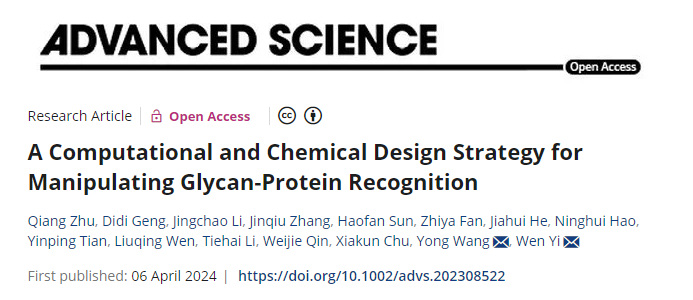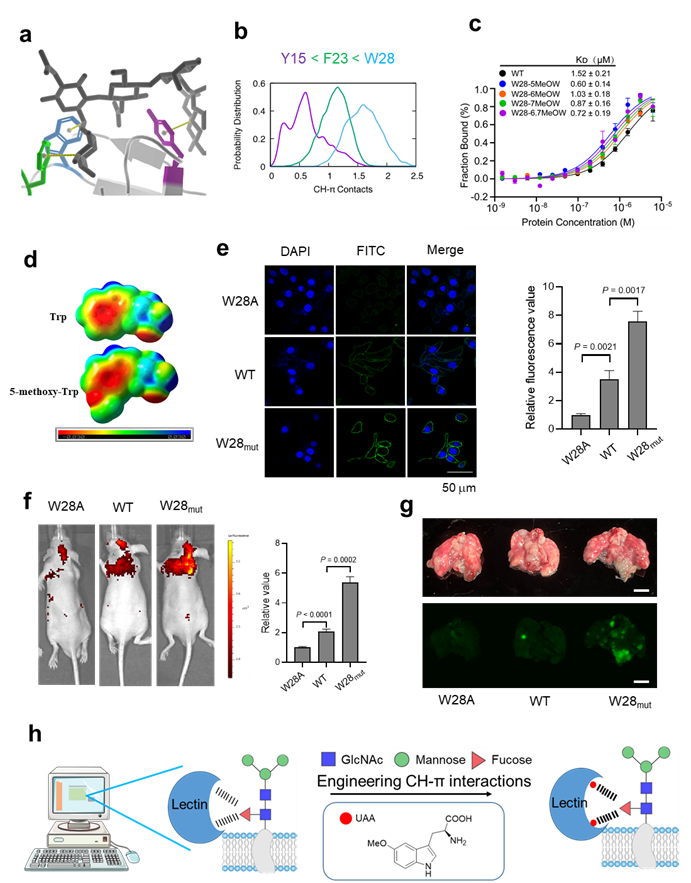
Title: A Computational and Chemical Design Strategy for Manipulating Glycan-Protein Recognition
Qiang Zhu, Didi Geng, Jingchao Li, Jinqiu Zhang, Haofan Sun, Zhiya Fan, Jiahui He, Ninghui Hao, Yinping Tian, Liuqing Wen, Tiehai Li, Weijie Qin, Xiakun Chu, Yong Wang, Wen Yi
Abstract
Glycans are complex biomolecules that encode rich information and regulate various biological processes, such as fertilization, host-pathogen binding, and immune recognition, through interactions with glycan-binding proteins. A key driving force for glycan-protein recognition is the interaction between the π electron density of aromatic amino acid side chains and polarized C─H groups of the pyranose (termed the CH–π interaction). However, the relatively weak binding affinity between glycans and proteins has hindered the application of glycan detection and imaging. Here, computational modeling and molecular dynamics simulations are employed to design a chemical strategy that enhances the CH–π interaction between glycans and proteins by genetically incorporating electron-rich tryptophan derivatives into a lectin PhoSL, which specifically recognizes core fucosylated N-linked glycans. This significantly enhances the binding affinity of PhoSL with the core fucose ligand and enables sensitive detection and imaging of core fucosylated glycans in vitro and in xenograft tumors in mice. Further, the study showed that this strategy is applicable to improve the binding affinity of GafD lectin for N-acetylglucosamine-containing glycans. The approach thus provides a general and effective way to manipulate glycan-protein recognition for glycoscience applications.
Link: https://doi.org/10.1002/advs.202308522






